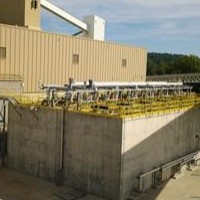
Figure 1: ABMet System at AEP Mountaineer
- Application: Treatment of Flue Gas Desulfurization (FGD) Wastewater and Landfill Leachate
- Capacity: 350 gpm of FGD Wastewater Treatment Plant (WWTP) effluent plus 250 gpm landfill leachate (Total 600 gpm; 136 m3/h)
- Location: New Haven, West Virginia, U.S.A.
- Commissioned date: November, 2011
Due to growing environmental concerns about selenium discharges into surface waters in West Virginia and surrounding areas, the AEP Mountaineer power plant needed to meet a selenium discharge limit as part of its 2009 NPDES permit renewal. A discharge limit of 33 parts per billion (ppb) was established as the monthly average for outfall 001, the plant’s primary discharge point. Of the multiple streams contributing to this outfall, the FGD blowdown and landfill leachate streams were determined to be the primary sources of selenium.
Due to the variable makeup of the blended stream, any treatment solution would need to handle significant variability in flow rate and constituent loading.
Following a successful pilot study in 2008, AEP chose Veolia’s ABMet* solution to comply with the new NPDES requirements (Figure 1). The plant design met the following guaranteed effluent performance for a combined stream of FGD WWTP effluentand landfill leachate:
Total selenium <25 ppb
Total Suspended Solids <30 ppm (monthly average)
Total pH between 6 and 9
Prior to treatment in the ABMet biofilters, up to 350gpm of the plant’s FGD blowdown is treated in a series of physical/chemical and liquid/solids separation steps in the FGD-WWTP. In addition, up to 250gpm of landfill leachate from a holding pond can be blended into the FGD WWTP. The combined stream then passes through the six first-stage ABMet biofilters where it flows downward through the biologically activated media and is treated. The effluent iscollected near the bottom of each biofilter through a pipe collection manifold and pumped into the six second-stage biofilters for further treatment. Effluent from the second-stage biofilters is discharged to a pond prior to final discharge through outfall 001.
An ABMet waste stream is periodically generated to remove accumulated solids from the biofilters. This stream is metered back to the existing FGD-WWTP where solids, including particulate selenium, are separated from the stream along with the bulk of precipitates generated by the FGD WWTP phys/chem process. The solids are then dewatered and pressed into a cake that is deposited safely into a nonhazardous landfill.
Result
The ABMet system was seeded with Veolia’s specialized bacterial cultures, and fed Veolia’s single-blend nutrient as a source of carbon, nitrogen, phosphorous and micro-nutrients for the bacteria. The result was an extremely fast and effective startup – effluent selenium concentrations achieved the guarantee limits within seven days of the bacteria being introduced into the biofilters.
The ABMet system has consistently achieved less than 10 ppb selenium levels.
The ABMet System has also provided satisfactory results in mercury removal and some reduction of nitrite/nitrate.
operations performance
The ABMet system has been in service since November 2011 and as of June 2014 has provided 100% availability. The operations team spends approximately 20 hours per week on sampling and O&M activities such as probe calibration and cleaning specific to the ABMet system.
Due to the scheduled yearly shutdowns of the power plant, the ABMet system has been shut down for as long as ~3 months and then brought back into service without negatively impacting the performance of the system.
If you would like to know how Veolia can solve your selenium compliance and water treatment needs, contact your local Veolia representative or visit our website.
